We used to ask ‘How far can we go?’ Now some of us are asking ‘How can we rein it in?’
Talk of silver linings in the pandemic has become a normal, if trite, pleasantry. The digital transformation since 2020, however, has given us a chance to see how historically informed performance has changed. For better and worse, we’ve entered an era where period instruments are co-opted into artistic projects that are no longer dedicated to the uncovering of historical truths.
One factor that contributes to this blurring, at least on the American scene, is the growth of historical performance into a robust economic vehicle for musicians. The HIP “gig” is more common than ever, especially on the East Coast, and students in HP departments are increasingly educated not just on how to look at a score differently, but how to perform within certain agreed-upon boundaries which have supposedly come to set HIP apart from modern performance from a sonic standpoint.
Yet if we play a gig and do as we’re told, even to the point of doing the opposite of what we know to be historically true, can we call this HIP?
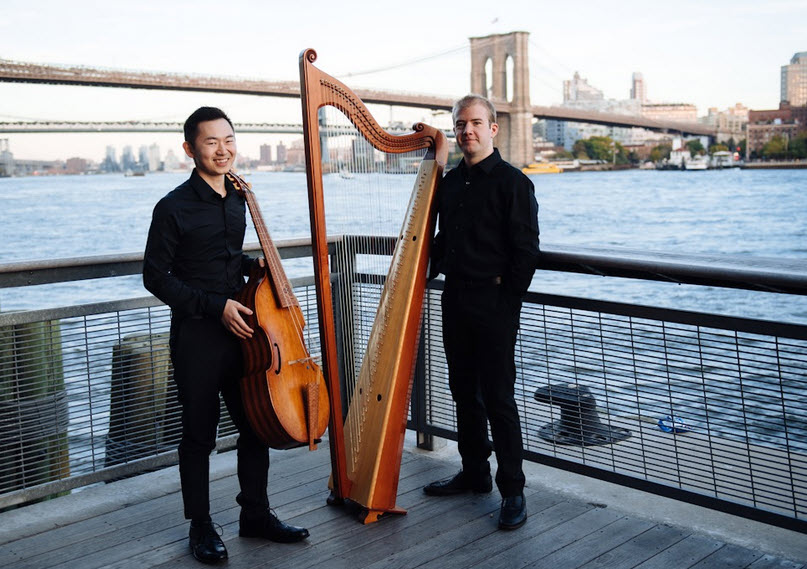
This is a common point of discussion with my friend and colleague Arnie Tanimoto, a viola da gambist based in New York and a graduate of Juilliard’s period-instrument program. Asked what the word “gigging” triggered in his mind, he offered, “A certain nonchalant attitude towards one’s work. ‘Gigs’ are often projects in Baroque music where I have little or no control over personnel management, programming, directorship, etc.—they are not my projects. On top of the lack of ownership, they are projects that are often compromised for rehearsal time, meaning that there is very little time for experimentation and exploration. So the collaborative aspect of ‘continuo’ devolves into pure accompaniment, where treble-bass polarity is swapped for treble supremacy. This is contrary to what Baroque music is supposed to be about and, thus, sums up the early-music gig culture in the 21st century.”
La musica altro non essere che la favella e’l rithmo, & il suono per ultimo, e non per lo contrario.
Music is text and rhythm, & sound last of all, and not the other way around.
Caccini, Le Nuova Musiche (1602)
Obviously, not all gigs are like this. Many require acknowledgment of temporal and economic restraints (a professional attitude), but also strong doses of willful ignorance (“professional” behavior). When you’re a harpist, you play a lot of Italian vocal music. Before I arrive at a gig, I can rest assured that my colleagues all have higher education in HIP and are hired as a result (in my mind, this is where lines between networking and highly classist gatekeeping appear very slim).
That said, such qualifications are not required of singers, as indeed there are fewer programs for singers in North America because early vocal music (1) is considered ancillary to instrumental disciplines in the field of HIP or (2) is not considered technically advanced enough to be approached in an operatic degree curriculum.
The result goes beyond treble-bass polarity and is ignorance as to the importance of vocal technique, research, and training. Despite Caccini’s insistence that, in music, text and rhythm come first, I have yet to play a gig in which the tactus and diction are prioritized above innumerable arguments about whether x-cadence should be a major or minor chord in the continuo. The beat sways, and Caccini’s advice that sprezzatura be used sparingly is ignored.
Anything goes with regards to ornamentation, and more often than not the singers mimic something they’ve heard in a popular recording. On top of that, the harp is expected to perform like a naked harpsichord, and a member of the ensemble (usually the harpsichordist) is eventually appointed a de-facto conductor (I like to call this phenomenon Cembalo-Normativity).
All this said, the result is not unmusical. In fact, the performances are often dramatic, and the sound of period instruments is foreign enough to audiences’ ears to induce a (ironically romantic) transportation to the past. One cannot deny that all icing and no cake still qualifies as dessert. But not all such performances qualify as HIP. The standards to which an early music performance is held are increasingly indistinguishable from those of a modern performance. And while there is satisfaction in engaging with colleagues in live performance, I wonder whether we needed training in HIP to partake in glorified mimesis. Some of us don’t go to restaurants just for dessert.
‘the standards to which an early music performance is held are increasingly indistinguishable from those of a modern performance’
While one needn’t follow a treatise to the letter, many HIP gigs don’t allow for proper preparation. Not everyone is content with this. Arnie is quite firm that “empirical pursuit with an instrument is a part of research, regarding HIP. Replacing a quill, changing a fret, and making reeds are all part of being an informed player.”
Institutions of higher education, sensing a mandate to prepare students for the economic realities of their field, do little to dissuade HIP students from accepting the shortcuts inherent in gig culture. But who can blame them?
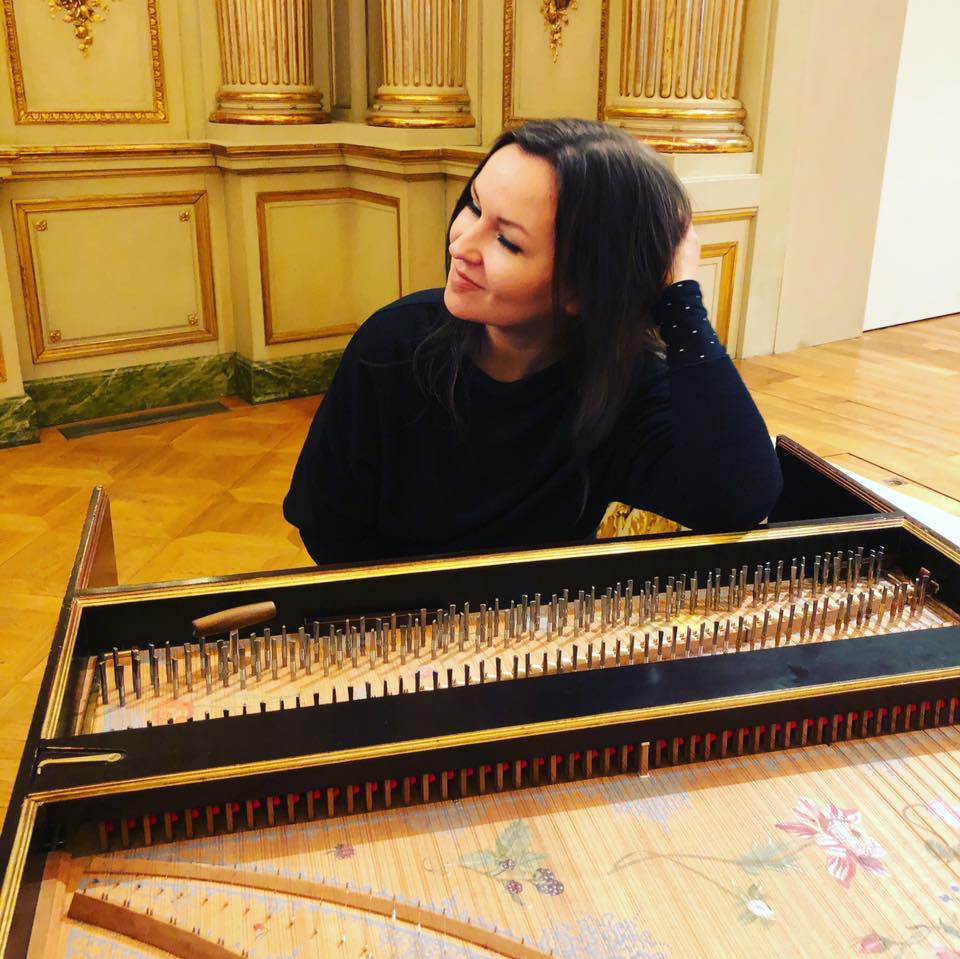
Harpsichordist Alina Rotaru is a Dozentin at the Musikhochschule in Bremen, an institution well known for its emphasis on historical inquiry and research. Speaking on her experience in higher education in Germany and the Netherlands, she said, “In my opinion, the ‘balance’ is weighing heavily on research, while the other, practical aspect of preparation for gigs could be taken more seriously. This is something that I personally do not find helpful. There is a completely different set of skills required for a successful participation in a gig.
“The student projects organized inside a music academy are not enough for the students to practice their gig skills. This aspect needs to be taken more seriously in an institution of music higher education, on a systemic basis, not in the old-school manner which basically means that if a student is lucky enough, then a teacher might take them under their wing and get them some gigs.”
This is interesting. When the HIP community works to increase professionalism and widen access, other boundaries start to harden in turn. Still, the growth in interest and access spurs not only more performance, but more research and more instrument building. The multiplication of luthiers, expansion of digital access to sources, and uptick in enrollment in higher education means that gigs are growing, but so are the opportunities to go down rabbit holes with historicity.
Alina added, “HIP includes the proper choice of the instrument, and if it is not possible to have the right instrument, then the informed performer will be able to at least find the closest tool to the original—for example, it is more fitting to use a modern bow for Romantic repertoire than a Baroque bow. The reason this is better is because it is technically more natural. In the end, that is the point of HIP: to make our lives easier, actually.”
So how should higher education respond? Studying historical performance at Oberlin, I got lucky because I had doses of research and reality in my education. But, from talking to Arnie and Alina, it’s clear that opinion can be divided on how priorities should be balanced.
Arnie feels that “research should be the entire focus, and not realistic gig prep. Universities and conservatories are not supposed to simulate reality, where there are inevitable constraints on the artistic process. They are supposed to be an idealized place where students can learn and experiment. Any focus on realistic preparation for the ‘gigs’ would only hinder this pursuit. This isn’t to say that practical skills, like learning to tune quickly and quietly, to come to rehearsals prepared should not be taught—these things ought to be a given, as efficiency allows for further exploration of HIP.”
Gateway drugs
One of the most fantastic things I saw at Oberlin was how HIP took the role of gateway drug for modern performers, pianists in particular. Department Chair David Breitman is equally comfortable on modern and period pianos. “Piano majors taking secondary fortepiano lessons tend to value a smooth, legato surface,” he said, “and it’s a revelation to them that long phrases can be built out of clearly articulated units. With the help of the fortepiano, they explore a wider palette of articulation, subtle small-scale dynamics, and, of course, added ornamentation. I hope to persuade them that, although the modern piano is very good at producing a uniform, continuous flow of sound, it doesn’t have to be played that way all the time!”
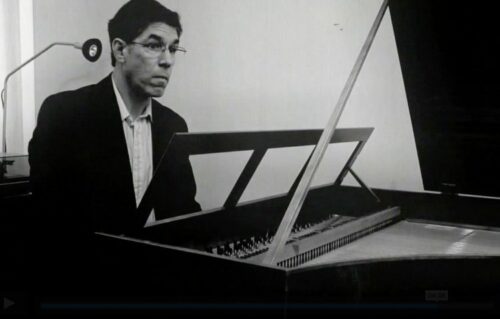
David acknowledges the interaction between period and modern instruments. “We all practice historical performance now. ‘Un-historical performance’—like Busoni’s arrangements of Bach or Mahler’s re-orchestrations of Beethoven—is totally out of favor. Everyone treats historical compositions with reverence, and while period instruments guarantee a certain historical flavor, modern players tend to stay close to the page, rarely permitting themselves the added ornamentation or rhythmic freedom typical of many period performers.
“Both sides have their timid conformists, anxious not to offend potential critics (or competition jurors),” David said. “Thankfully, each has the occasional daring ‘note-cracker,’ whose creativity keeps old music alive.”
I think we all concede that HIP can (and does) nod towards prevailing period-instrument practice even on a modern instrument. Just consider Bach gigues where a triplet in one hand might be accompanied by a dotted eighth and a sixteenth in the other. While an old recording of Alfred Brendel might feature a literal rhythmic interpretation, piano recordings these days tend to lean into the sway of the triplets and even explore the harmonic-tension ornaments, rather than showcasing technical agility. Indeed, concert pianists (especially in Europe) are expected to know more about style than in the past in order to be authentic or simply to remain competitive in the market.
During the pandemic, part of our digital transformation, I enjoyed watching online recitals by harpist Antoine Malette-Chénier, particularly one featuring a Bach lute suite played on a 17th century Italian-style harp. That’s right: wrong instrument, wrong century, while signifying all things HIP that we love to lord over our (supposedly) troglodyte non-HIP colleagues: flawless ornamentation, a rhetorical performance style, and an otherworldly sound quality.
“I’d say my playing of Bach on the baroque harp is 55 percent experimentation and 45 percent historical practice,” Antoine told me over Instagram messenger. Despite our scant knowledge of the instrument from sources, we know that it was closely associated with the lute and theorbo. As a harpist myself, I know all too well that the solo baroque repertoire for the instrument does not exist in written sources. (It would seem the instrument was as inaccessible for composers then as it is now.)
“Playing Bach was first and foremost a pedagogical exercise for me on a musical and technical level,” Antoine continued. “That said, Bach himself being an avid transcriber, I always feel that, even if no one during his lifetime played one of his suites on a 17th century Italian baroque harp, had a player come by, he would have had no objection to it if it served his music well.”
The norms of HIP have vastly expanded as certain instruments have come into their own over the last several decades. While the early-music pioneers focused on re-situating the canonical works into a more “truthful” performative philosophy (such as with Frans Brüggen’s early experiments with Mozart symphonies), that perspective has had to be reconsidered with regard to instruments.
Projects like Antoine’s bypass the textual battleground and unhitch period instruments from the philosophy of HIP—though in a manner that would not be possible without one or the other. This is perhaps the closest we might get to historical fiction in music. The historically impossible can be repackaged as the historically plausible, given one or two stretches of logic.
Historically informed composition?
Let’s review what qualifies as HIP these days:
- a gig on period instruments, potentially agnostic to historical rectitude;
- projects devoted to recovering past practices through textual and empirical research;
- stylish playing on modern instruments influenced by HIP’s evangelism in higher education;
- transcriptions of music between period instruments, though such a transcription process might never have been possible.
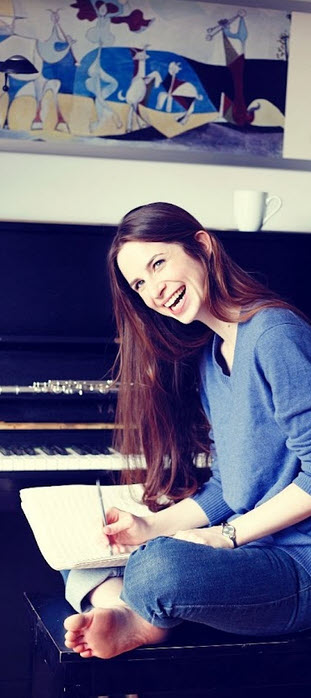
There are, of course, performers who push even these boundaries. One of the more revelatory recordings to emerge in the last few years was Emi Ferguson’s Flying the Coop, a project with the ever-fresh ensemble, Ruckus. The album contains many elements: some of Bach’s Flute Sonatas are presented with a continuo band, and keyboard preludes are transcribed for solo flute and ensemble. The recording showcases some of the better HIP players on East Coast, who dip their toes into the waters of folk music and other genres—at one point a banjo appears—while also illustrating the connective tissues with Bach’s instrumental repertoire. The project is fictive, yes, but built on HIP re-appropriation of textual sources.
“Based on my experience with new music,” Emi said in an earlier interview with this magazine, “there are lots of ways to achieve powerful performances, composers change their minds, and everybody is going to want something slightly different. So, perhaps there’s more room for discussion than we often give ourselves. Are there wrong ways? Maybe. But there are so many rights ways. There are so many beautiful records and performances out there, no two alike. We can get as close to historically accurate as possible, and we do the best we can, making the most educated and thoughtful decisions while knowing we live in the 21st century. And that’s also a beautiful thing.”
‘Are there wrong ways? Maybe. But there are so many rights ways.’
The world of new music has slowly come to recognize the expressive possibilities of period instruments but, more interestingly, practitioners of HIP have started cautiously creating their own new music. One manifestation of historically informed composition is from the New York City group Nuova Pratica.
Harpsichordist Nicola Canzano believes there is at least as strong a justification for historical composition as for strict historical performance. “Nuova Pratica composes music in historical styles, or inspired by historical styles, and we perform it on period instruments using techniques in a historically informed fashion,” he said. “On the one hand, what we are doing is even more historically informed than the most punctilious early-music groups, because it was not at all common in the more distant past to play music that was not one’s own or outside of the ensemble in which one performed (notably, this began to happen more and more after the Baroque era).
“On the other,” he continued, “purposeful composition of music in ancient styles is quite a new phenomenon, at least in the sense that we see our music very much as serious contemporary composition in its own right, and not merely ‘pastiche’ (a derogatory label, in our eyes).”
For Nicola, style needn’t only be defined by time. “Members of our group sometimes compose in a style which includes more contemporary tastes like folk, etc., which of course by definition defies the boundaries of historical performance.”
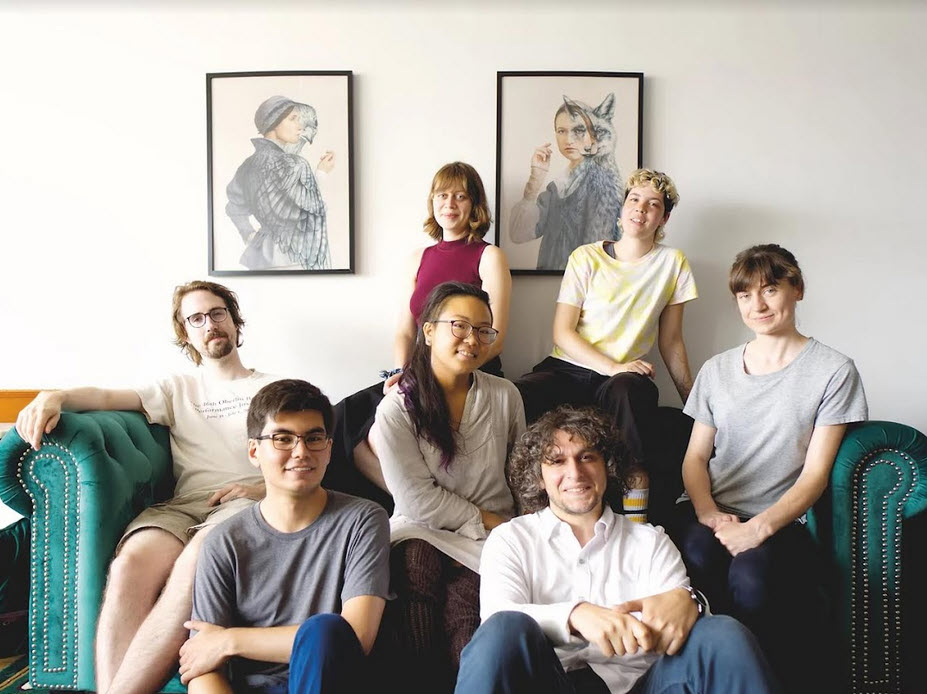
Nuova Pratica is not alone: groups including Propheti Della Quinta perform new oratorios by Elam Rotem in the style of Salamone Rossi, and Andrew Lawrence-King composed an opera in the style of Monteverdi, using Rinuncini’s libretto. Still, there remains some stigma about taking the creative leap with instruments most often used to convey connectivity with the past.
“Some might say the fact alone that our music is not hundreds of years old is a similar transgression,” Nicola added, “but we do not see it this way: historically informed performance is becoming its own style, in a sense. While many of the techniques which encompass HIP are tethered to certain historical treatises and the like, this should not be rigid or doctrinarian. For example, a decidedly French technique might be used now and again as a spice in Italian music, which is legitimate because it is not at all impossible for French musicians to have read Italian music (and in fact, we know they did, and played it in a way that the Italians would not recognize). Of course, as composers living in the 21st century, we have even more freedom to fuse a variety of historical techniques to suit our needs, even combinations which defy historicity but would still be well recognized by audiences familiar with HIP.”
From gigs to experimental projects in new music, the practice of performing on period instruments has arguably entered a new era where anything goes. An expanded economy, a wider presence in higher education, and a digital age have combined to expand the boundaries of what can be done with the philosophical advances made in the 1960s and ’70s.
But where we once asked, “How far can we go?” others (including myself) will ask “How can we rein it in?”
With all the creativity and expression that is being undertaken on modern and period instruments alike, I ponder whether new lines might be more firmly drawn in the American HIP scene. Such would not necessarily signify an “end to HIP” (or trigger the next incarnation of Bruce Haynes’ “The End of Early Music”) but rather the potential for clearer philosophies on the use of period instruments and period music.
Parker Ramsay’s latest recording is The Street, a concert-length solo for harp and narration by Nico Muhly and Alice Goodman. His season includes a residency at IRCAM in Paris. While serving as organ scholar at King’s College, Cambridge, he earned his undergraduate degree in history, and later pursued graduate studies in historical performance at Oberlin and modern harp at Juilliard.

